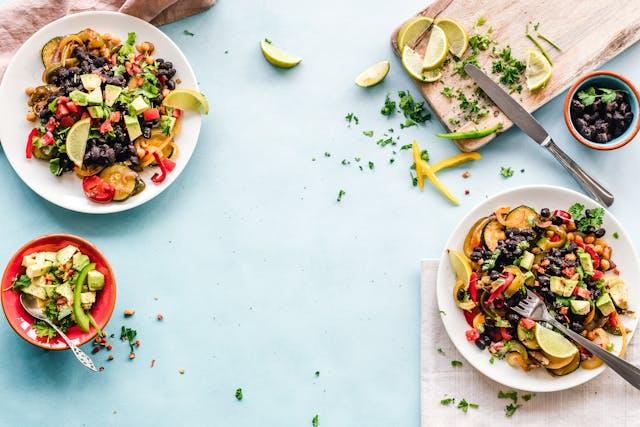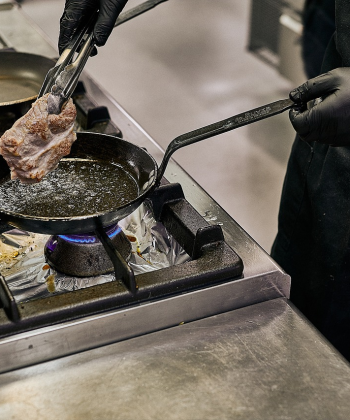
When packing your bags for that sun-soaked summer vacation, don’t forget to leave a little room for culinary adventure! Diving into the local gastronomy isn’t just about filling your plate; it’s a delicious dive into the heart of what makes each destination unique.
Exploring local cuisines opens a world of flavors and teaches us about the region’s history, culture, and traditions. It’s like getting a taste of the local life, literally! More than just eating, it’s about connecting with people—sharing a meal is sharing a story.
So, as you sketch out your travel plans, include a taste tour. It’s a chance to create memories that are as flavorful as they are unforgettable.
Understanding Local Food Culture
Delving into local cuisine is like turning the pages of a region’s cultural diary. Every dish tells a story intricately woven with threads of history, environment, and the collective spirit of the place. For instance, consider how the rugged mountains and brisk climate of the Andes influence the hearty stews and robust flavors of Peruvian cuisine or how the sun-drenched Mediterranean shores inspire the fresh, olive oil-drizzled dishes in Greece.
Understanding this culinary landscape does more than just satisfy your taste buds. It offers a lens into the everyday lives of the locals. It’s about seeing how geography shapes diet, how climate dictates seasoning, and how history alters techniques. This culinary journey doesn’t just add flavor to your travels; it deepens your connection with each place you visit. You’re not just a tourist but a guest being invited to the table. So, as you explore, take a moment to savor the food and the rich tapestry of factors that brought it to your plate. It’s a multi-sensory way to experience the world, truly allowing you to taste the essence of each destination.
Planning Your Culinary Adventures
Planning your culinary adventure is an essential slice of the traveler. Before setting foot on a plane, dive into a flavorful research session. Start by exploring food blogs, local travel websites, and culinary forums. Sites like The Foodellers are treasure troves of insider tips on must-try dishes and dining spots that might not make the guidebooks. Discover what’s unique about the local palate and list the dishes you simply can’t miss.
For example, if you’re venturing to Greece, visiting a renowned local eatery like deltarestaurant.gr can offer you a firsthand experience of Mediterranean cuisine at its best. This restaurant embodies the fresh, olive oil-drizzled dishes inspired by the sun-drenched Mediterranean shores, making it a perfect fit for culinary explorers.
Once you’ve whet your appetite with knowledge, it’s time to get practical. Popular eateries and immersive food tours can fill up faster than a hotcake flips on a Sunday morning, so early reservations are key. Securing a spot at renowned local restaurants or booking a guided food tour guarantees you a seat at the table and enriches your travel experience. It’s about more than just eating; it’s about ensuring you have those culinary high points planned out, turning good trips into unforgettable gastronomic journeys.
Participating in Food Tours and Cooking Classes
There’s no better way to spice up your travel itinerary than by adding a dash of hands-on culinary exploration. Engaging in organized food tours and cooking classes offers an authentic slice of local flavor that goes beyond the typical tourist path. With experts from The Travel Vibes and The International Kitchen guiding you, these experiences transform you from an observer to an active participant in the local food scene.
Imagine strolling through vibrant markets, ingredients fresh and fragrant under your fingers, as a local chef leads the way. Food tours introduce you to the regional diet’s staples, explaining each item’s origin and importance as you sample your way through stalls and street vendors. It’s a sensory overload in the best way possible—colors, smells, and flavors bursting around every corner, with stories to match each bite.
Then, tie on your apron for a cooking class where these ingredients come to life. Under the guidance of culinary masters, you’ll chop, stir, and season your way into the heart of the cuisine. These classes are more than just learning recipes; they’re about mastering techniques and understanding the philosophy behind each dish. You’ll gain practical skills that you can take home, turning your vacation memories into dinner party showstoppers.
Beyond the skills and tastes, these culinary adventures offer deep, immersive experiences. They foster a unique connection with local chefs and fellow food lovers, creating a community around the dining table. It’s not just about the food—the shared laughter, the stories exchanged, and the warmth of hospitality that fills the room. These experiences ensure that you don’t just bring back souvenirs from your travels but skills, knowledge, and friendships that last a lifetime.
Exploring Street Food
Diving into the world of street food is a must-do for any culinary adventurer seeking to experience the true essence of local flavors. As you wander through bustling markets and lively streets, you’re greeted by the tantalizing aromas of freshly cooked treats that promise an unforgettable taste experience. To enjoy these delights safely, keeping a few tips in mind is crucial.
Firstly, scout for stalls that boast high hygiene standards. Look for vendors who wear gloves, use separate utensils for handling money and food, and maintain clean cooking areas. These little signs often indicate a conscientious vendor who cares about quality and safety.
Equally important is choosing stalls that are popular among the locals. A long line of eager local patrons usually signals fresh ingredients and a fast turnover of food—both key to avoiding the dreaded traveler’s tummy. Plus, the locals often know where to find the tastiest bites in town.
By following these simple guidelines, you can confidently indulge in the vibrant world of street food, enjoying dishes that are safe and delicious and steeped in the culture and tradition of the place you’re visiting.
Engaging with Locals
One of the richest sources of knowledge about a place’s culinary heart is its people. Engaging with local vendors and residents isn’t just polite—it’s a pathway to uncovering the deeper stories behind each dish. As you explore, take a moment to chat with the folks whose hands craft your meals. These conversations can open up a treasure trove of insights into local culinary traditions and personal recommendations you won’t find in any guidebook.
To truly get under the skin of local gastronomy, make a beeline for the community markets. These bustling hubs are not just places to buy food—they are vibrant arenas where the local culture comes alive. Here, you can see firsthand where the ingredients on your plate come from, learning about their origins and roles in regional cuisine. Plus, markets are often the best places to stumble upon local products that are unique and symbolic of the area—think handmade cheeses, crafted spices, or traditional sweets.
These experiences do more than enhance your culinary journey; they enrich your travel adventure with meaningful interactions and memories that last long after the flavors fade.
Documenting Your Experiences
Don’t just taste—document! A detailed food diary or a vibrant blog can turn your culinary adventures into a treasure trove of memories and experiences. As you explore diverse dishes, jot down your impressions, describe the explosion of flavors, and note any unique cooking techniques you encounter. This serves as a personal culinary archive and enriches your storytelling.
Photos are worth a thousand tastes! Snap pictures of your meals to capture the essence of each dish. And don’t shy away from asking for recipes—these are golden tickets to reliving the experience back home. Sharing these recipes and photos with friends and family lets them get a taste of the world through your eyes, spreading the joy and inspiration of your culinary journey.
Supporting Sustainable Practices
Choosing dining options and tours that prioritize sustainability is more than a feel-good choice—it’s a direct way to support local producers and contribute to preserving the region’s culture and environment. When you opt for restaurants that source their ingredients locally or select tours that emphasize eco-friendly practices, you’re investing in the community and helping to maintain its unique heritage.
Sustainable dining isn’t just about eating; it’s about participating in a conservation cycle that respects and revitalizes local ecosystems. It ensures that the culinary traditions passed down through generations can thrive in their native soils. By making conscious choices, you enjoy authentic and fresh meals and leave behind a lighter footprint—a truly satisfying way to experience the world.
Conclusion
As we’ve explored, delving deep into local gastronomy offers more than just delicious meals—it opens a window to the heart and soul of the places you visit. From bustling street food stalls to serene cooking classes, each bite tantalizes your taste buds and enriches your understanding of the local culture.
Keep an open mind, and let curiosity be your guide. Each culinary encounter is a unique opportunity to learn and grow, transforming every meal into a memorable adventure. By embracing these experiences, you ensure that your travels leave a lasting impact on your palate and your entire outlook on the world.
For those inspired by the marketing genius behind successful local eateries, or if you’re curious about how the best in the business make their mark, consider visiting 5 Best Restaurant Marketing Tips. This resource can provide valuable insights into effective strategies that keep food lovers coming back for more.
So, go ahead, taste, chat, learn, and most importantly—enjoy every flavor-filled moment of your journey.



